All you need to know about trekking Mount Siguniang
Reputed as the eastward Alps because its singular peaks and unique landscape closely resemble the real Alps, Mount Siguniang, also called Four Sisters Mountain or Four Maidens Mountain, is declared as the world natural heritage, the world heritage of pandas’ habitat in Sichuan, etc. It is mostly famed among world-wide trekkers for its four continuous peaks, named Yaomeifeng, Sanfeng, Erfeng, and Dafeng at the elevation of 6,250m, 5,664m, 5,454m, and 5,055m respectively, which are covered with snow and ice yearly.
Mount Siguniang is rich in tourism resources with snow-capped mountains, steep peaks, beautiful glaciers, clear streams, large alpine meadows and hundreds of lakes spreading at its 3 eye-catching valleys. As a place with such breathtaking scenery and awe-inspiring mountain landscapes, it is the fairyland for tourists and photographers, and the paradise for trekkers and mountaineers. Honored as the ‘Outdoor Paradise’, it offers a large variety of outdoor activities such as trekking, camping, horse-back riding, mountain biking and climbing, ice-climbing, rock-climbing, etc. No matter if you are looking for a leisure tour for family or an adventurous tour from easy hiking to difficult mountain climbing, undoubtedly, it is a best place that can match all your desires during the Sichuan tour.
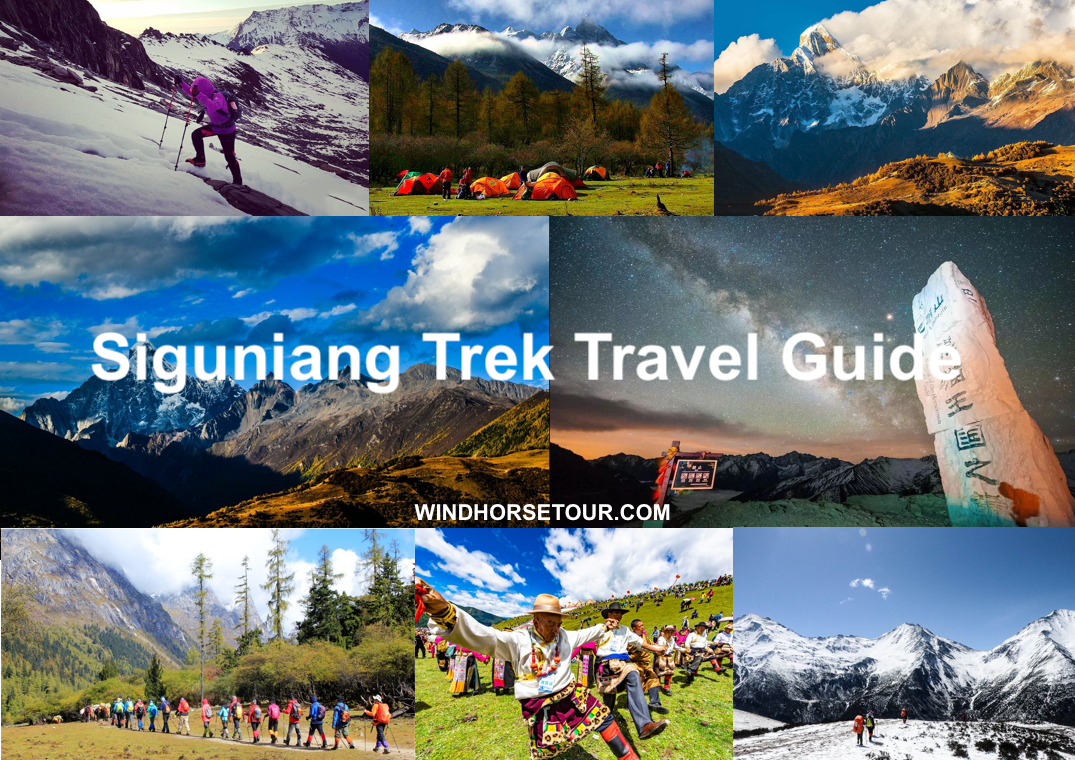

How to reach Mount Siguniang
Located in Siguniang Town, Xiaojin County, Aba Tibetan and Qiang Autonomous Prefecture, Sichuan, Mount Siguniang is very close to Chengdu, which is only about 220KM west of Chengdu and just requires a 4-hour drive via Dujiangyan and Wolong. There are no direct trains or flights to Mount Siguniang, hence, tourists can choose to take a train, flight or bus to Chengdu first, then head to Mount Siguniang by public tourist bus or private car with a driver. For travelers who plan to take a public bus to Mount Siguniang, they can get off at Siguniangshan Town (or Rilong Town) on the public bus to Xiaojing. Travelers who take a private car to Mount Siguniang and be sufficient in time, it is worth having a detour to Dujiangyan Irrigation System or Wolong Panda Base.

When to trek at Mount Siguniang
It is widely considered that Autumn, particularly from late-September to November, is the best time to visit and trek in Mount Siguniang Scenic Area, as it is the season with breathtaking colorful scenery, less rainfall, higher visibility, and lots of sunny days with puffy clouds and blue sky in the daytime and bright stars at night. Late spring and summer from May to August is also another period recommended for visiting and trekking in Mount Siguniang, as the weather is warm, the landscape is very beautiful, the mountains and valleys are covered with green trees, grass and flourishing flowers, and oxygen content in the air is high, even though it has the largest rainfall of the year. In February and March (sometimes in January as well), heavy snow often happens and covers the places with an altitude of over 3,800 meters, making the places inaccessible, therefore, it’s better to avoid a trekking tour to Dafeng, Erfeng or anywhere higher in this period.
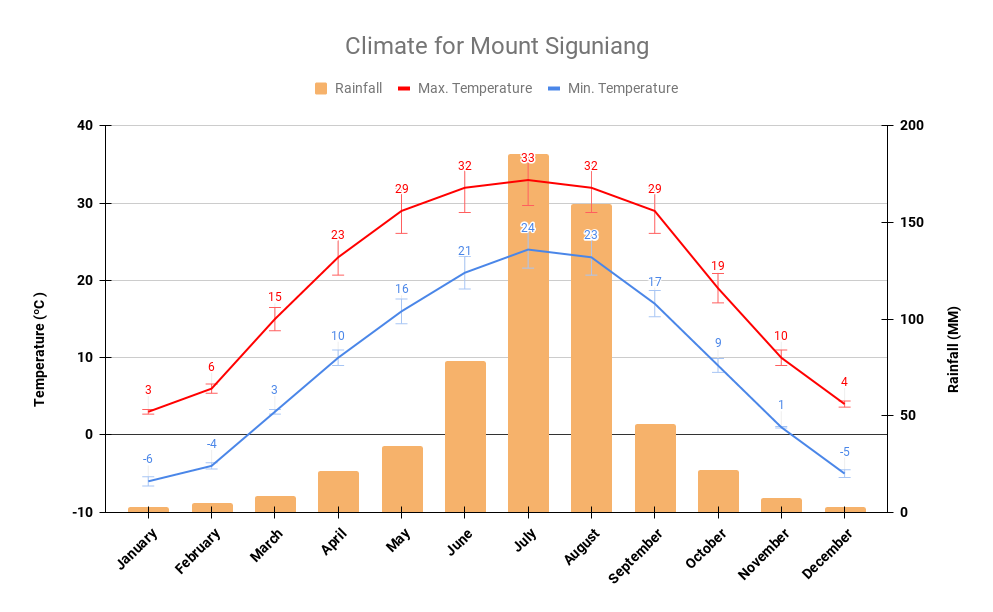
Mount Siguniang enjoys a typical plateau climate, with fresh air, and large temperature gaps between day and night, which can be cool or even cold morning and evening but hot at noon. Winter (December to February of the following year) is the season with the lowest temperature and the least precipitation in Siguniang Mountain, the average temperature is around -2°C. The average temperature in spring (March-May) is around 7°C. In summer (June-August), the temperature has risen to an average temperature of about 12°C, at the same time, the rainfall has increased significantly. In autumn (September-November), the temperature and the rainfall drops with an average temperature of around 6°C.

Where to trek at Mount Siguniang
As a place rich in mountain resources for trekking or climbing, there are 61 peaks above 5,000 meters and many peaks at the elevation between 4,000 meters to 5,000 meters. Those mountain peaks stand side by side, forming three beautiful natural valleys (Shuangqiao Valley, Changping Valley, and Haizi Valley) between them. Among these peaks, the most famed peaks are the four peaks named Yaomeifeng, Sanfeng, Erfeng and Dafeng. The 3 valleys and the most famous 4 peaks are the core scenic spots of Mount Siguniang Scenic Area. There are many amazing trekking trails, from scenic day-hikes to multi-day wilderness excursions, spreading across the three valleys and those peaks.
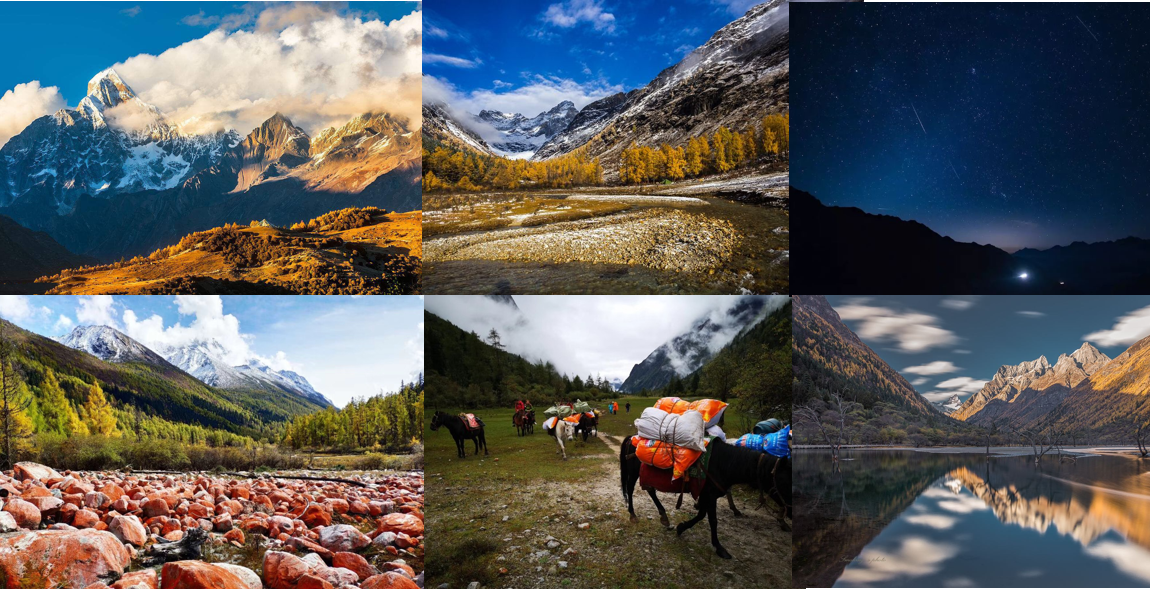
Shuangqiao Valley
Shuangqiaogou is the only valley that can be accessible by eco-sightseeing bus along a well-paved road. Besides, it has the charming scenery combined with pastures, forests, streams, lakes, and over 10 snow-capped peaks. In addition, there is a sightseeing wooden plank road for tourists to enjoy the breathtaking scenery slowly. With a total length of 34.8 kilometers and an area of 216.6 square kilometers, the best way to explore this valley is with a combination of by eco-sightseeing bus and walking.
Changping Valley
Famous for its snow-capped mountains, pastures, meadows, local Tibetan villages and virgin forests, Changping Valley is the best place for primitive ecological tours and ethnic customs tours in Siguniang Mountain Scenic Area. Moreover, it is the place where the highest peak - Yaomeifeng is located and an ancient battlefield with the altitude of about 3500m. Alongside, it is regarded as the paradise for outdoor enthusiasts, because it is an important campsite for climbing Sanfeng and Yaomeifeng, as well as an ideal place for rock climbing and ice climbing. At the same time, from Changping Valley, you can also cross to Bipenggou in Lixian County by trekking. To explore Changping valley, travelers can choose to take an eco-sightseeing bus from entry to the Lama Temple, then trek or ride a horse to explore the rest part of Changping Valley.
Haizi Valley
The highest valley in the 3 valleys, for the places with lakes, the altitude is about 4,200 meters. Its scenery is completely different from Shuangqiao Valley and Changping Valley. The first half part of this valley is dominated by alpine meadows, which is the best place to appreciate and photograph the Yaomei Feng. The second half is mainly lakes, and usually takes a day to explore due to the long distance. There are campsites available at Haizi Valley, it is also the place where mountaineers can climb the four peaks of Mount Siguniang. Climbers usually enter from Haizi Valley and then trek or ride a horse to the No. 1 campsite and base camp, then climb upwards to Dafeng, Erfeng, Sanfeng and Yaomeifeng.

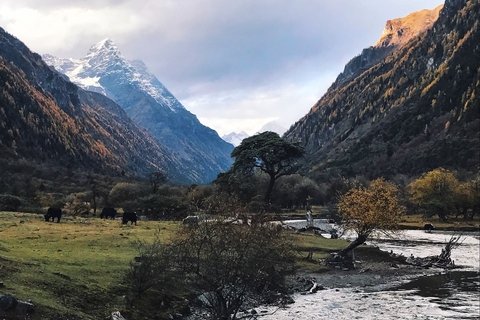
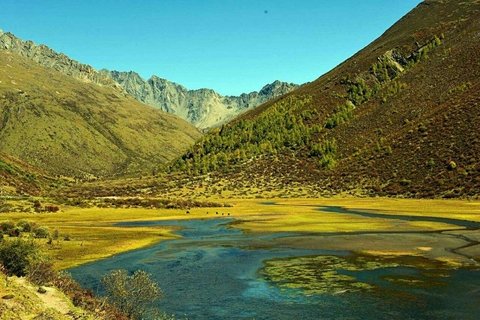
Dafeng
Dafeng, also called Daguniang Mountain, is at the altitude of 5,055m above sea level. Upon your step onto this mountain, the beautiful scenery with alpine meadows, dense shrubs and forests, colorful wildflowers, yaks and horses, and grotesque rocks will come into view. There is a small amount of snow on the top of the mountain in summer, while from November to the following April, and the snow on the mountain can be knee-high, making the scenery even more beautiful than summer and harder to trek. Check our Mt. Siguniang Dafeng Peak Climbing tour.
Erfeng
With the altitude of 5,454 meters, Erfeng, also called Erguniang Mountain, located between Sanfeng and Dafeng, has a fiery and sincere beauty. Every summer, most parts of the mountain are decorated with green trees and grasses, offering a breathtaking view. Here you can see rare animals living in the canyons of the Qinghai-Tibet Plateau and find many precious Chinese medicinal materials produced in Tibetan areas. Its top is in a sharp and steep shape, with its peak as narrow as a castle and covered with snow all the year round, making it typically steep.
Sanfeng
Sanfeng, also known as Sangguniang Mountain, is at the altitude of 5,664 m. It has beautiful scenery, complex landforms and rich flora and fauna. Among them, the giant panda is the most famous. Moreover, it is a good place to experience the unique Tibetan and Qiang ethnic cultures. Its steep peak is as narrow as a castle and covered with snow all year round too. Because of its special steepness, there are very few people having climbed to its top.
Yaomeifeng
Yaomeifeng, also known as Yaoguniang Mountain, with an elevation of 6,250 m above sea level, is the highest and the most famed peak among all peaks of Mount Siguniang Scenic Area. Due to its most slender figure, it is honored as the ‘Queen of Mountains in Sichuan’, Oriental Sacred Mountain. It is also regarded as one of the top ten famous mountains of mountaineering in China, so far, there are mountaineering teams from more than 10 countries and regions including the United States, Japan, Britain and Italy having reached its summit.
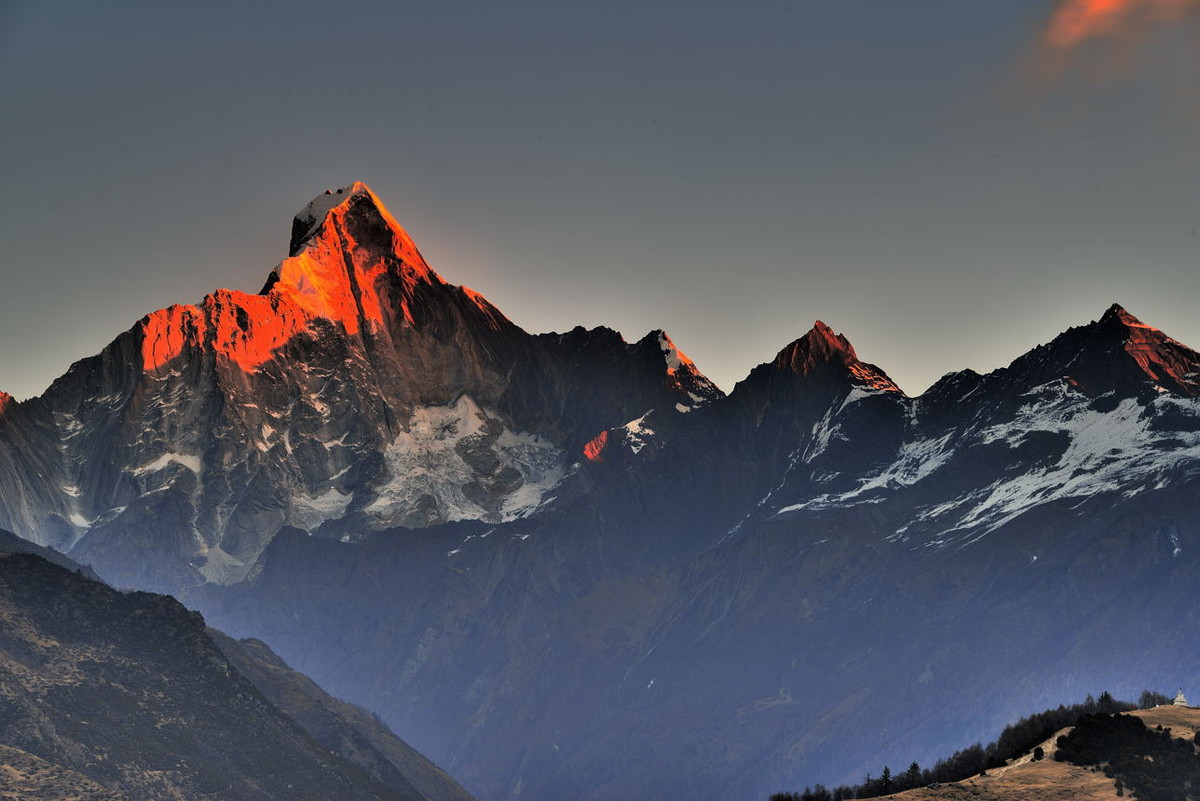

Different trekking routes at Mount Siguniang
As a place with lots of amazing trekking trails, here we have carefully selected some most popular trekking routes below for you to pick.

Regular day trek routes
1. Shuangqiao Valley day trek
- Take a bus to Niu Pengzi and use it as a base to hike/climb the nearby Ada Mountain or other peaks in Shuangqiao Valley. You can go back and forth on the same day.
Difficulty: Easy
Method: sightseeing bus + trekking
2. Changping Valley Tangbai Ancient Road day trek
- Siguniangshan Town - Entrance Gate of Changping Valley - Sightseeing Bus to Lama Temple - Trek to Ganhaizi, Lianghekou and Muluozi - Hike back to Lama Temple and ride a sightseeing bus to get out.
Difficulty: Medium
Method: sightseeing bus + trekking/horseback riding
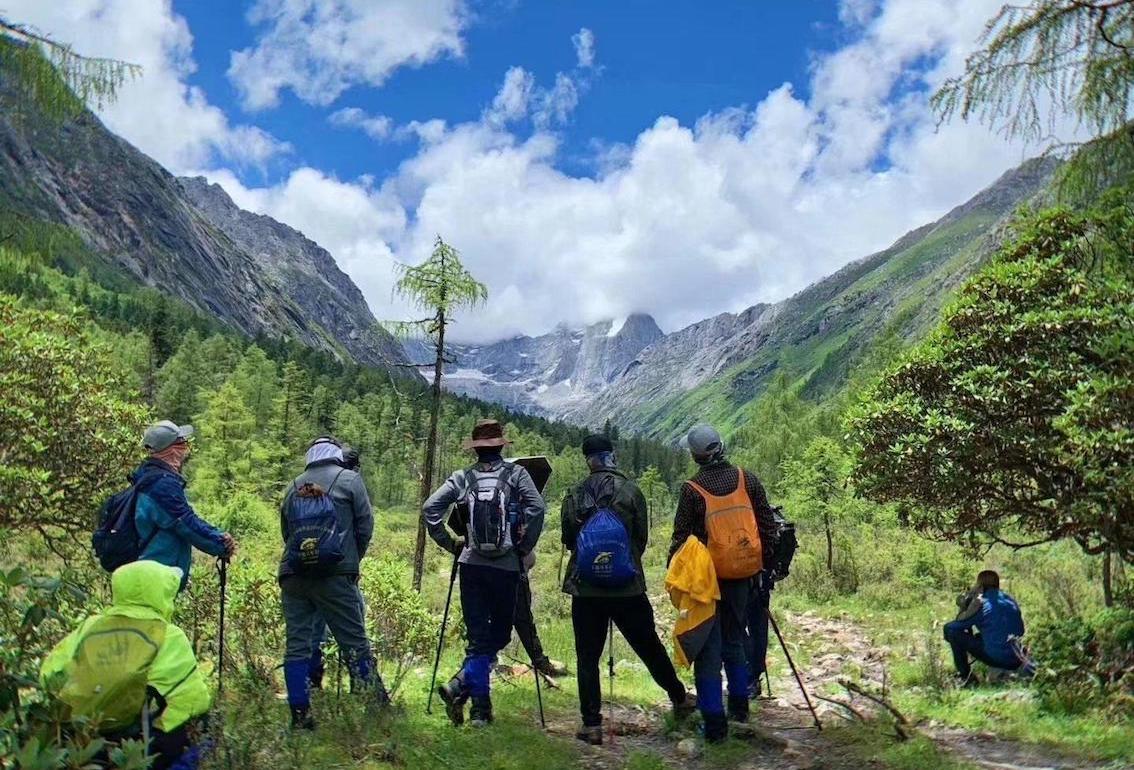

Semi-professional trekking/climbing routes
1. Haizi Valley / Dafeng
- Day 01: Siguniangshan Town -2km- Zhaijieping -1km- Guozhuangping -6km- Dajianbao -3km- Jipengzi -3km - Dafeng Base Camp, about 7-8 hours, 1,000 meters ascend
- Day 02: Dafeng Base Camp -8km- Summit of Dafeng (5,355m) -8km- Dafeng Base Camp, about 5-6 hours, 855 meters ascend and 855 meters descent
- Day 03: Dafeng Base Camp -15km- Siguniangshan Town
Difficulty: Medium to difficult
Accommodation: Camping
Method: Horse-back riding + trekking or trekking only
2. Changping Valley / Yaomeifeng or other nearby peaks / Bipeng Valley
- Route 1: On day 01, take the eco-sightseeing bus to Lama Temple, then trek or ride a horse to Upper Ganhaizi to set up camp; from day 02 to day 06, trek/climb to Siguniang or the other nearby peaks; then return to Siguniangshan Town on day 07.
- Route 2: On day 01, take the eco-sightseeing bus to Lama Temple, then trek or ride a horse to Lianghekou to set up camp; from day 02 to day 05, go up the Lianghekou and climb Pomiaofeng (5,413m) or other peaks by trekking; then return to Siguniangshan Town on day 06.
- Route 3: On day 01, take the eco-sightseeing bus to Lama Temple, then trek or ride a horse to Tuzhugou or Zhenggouba to set up camp; trek/climb the Yangmantai (5,666m) or Camel Peak (5,484m) from day 02 to day 04; and return to Siguniangshan Town on day 05.
- Route 4: Changping - Bipeng Valley trek
Day 01: Siguniangshan Town -7km- sightseeing bus to Lama Temple -6km- Dead Tree Beach - 9km - Muluozi campsite, about 5-6 hours, 200 meters ascend;
Day 02: Muluozi -3km- Shuidaba -5km- Wuguishi -6km- Chazigouwei campsite, about 6-7 hours’ drive, 300 meters ascend;
Day 03: Chazigouwei -6km- Mountain pass (4,750 m) -15km- Three Trees Campsite -2km- Panyang Lake -200m- Moon Bay Reception Station - 20 minutes’ sightseeing bus to Upper Lake - 40 minutes’ sightseeing bus to Bipeng Valley exit, about 10 hours, 1,050 meters ascend and 1,100 meters descent.
Difficulty: Medium to difficult
Accommodation: Camping
Method: Sightseeing bus + horse-back riding + trekking or Sightseeing bus + trekking
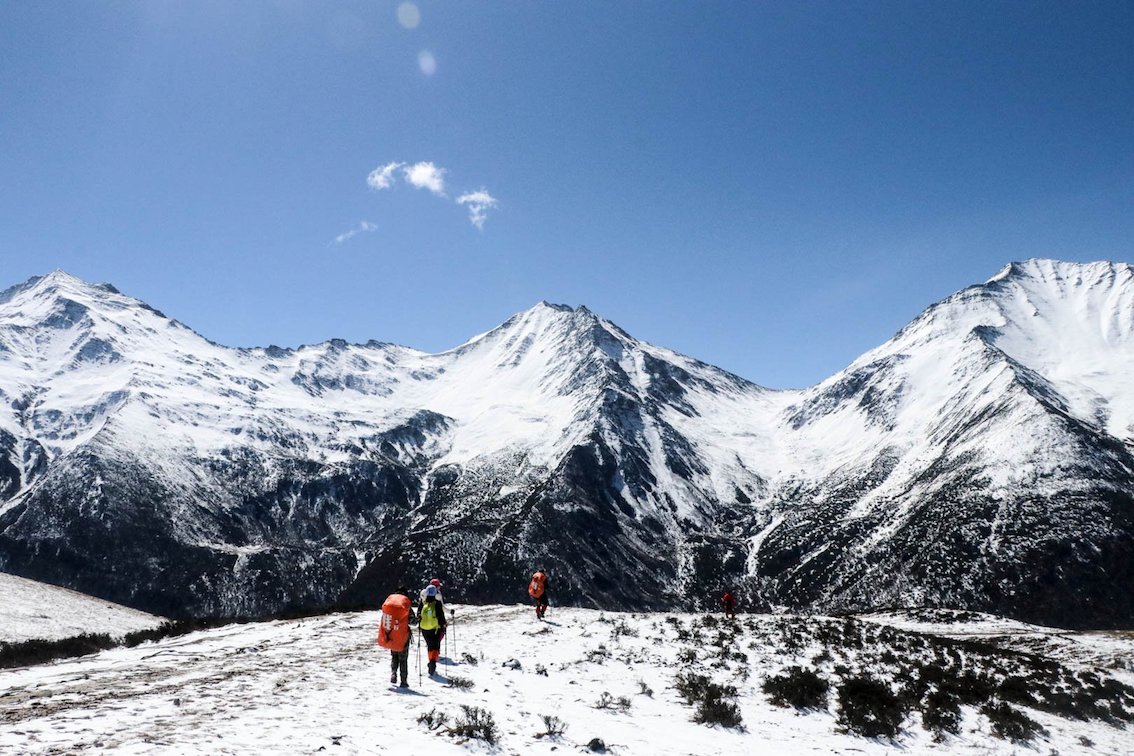

Professional trekking/climbing routes
1. Haizi Valley / Erfeng or its nearby peaks
- On day 01, trek or ride a horse to Laoniu Yuanzi, then hike to Maogou Cave to set up camp; from day 02 to day 06, trek/climb Erguniang (Erfeng, 5,454m) or other nearby peaks; then return on day 07.
Difficulty: Difficult
Accommodation: Camping
Method: Horse-back riding + trekking
2. Changping Valley / Sanfeng or Yaomeifeng or other nearby peaks
- Route 1: On day 01, take the eco-sightseeing bus to Lama Temple, then trek or ride a horse to Upper Ganhaizi to set up camp; from day 02 to day 06, climb Mount Sanguniang (or Sanfeng, 5,664m) or other nearby peaks; return on day 07.
- Route 2: On day 01, take the eco-sightseeing bus to Lama Temple, then trek or ride a horse to Muluozi to set up camp; climb Siguniang (or Yaomeifeng, 6,250m) or other nearby peaks from day 02 to day 06; and return on day 07.
Difficulty: Difficult
Accommodation: Camping
Method: Sightseeing bus + horse-back riding + trekking or sightseeing bus + trekking
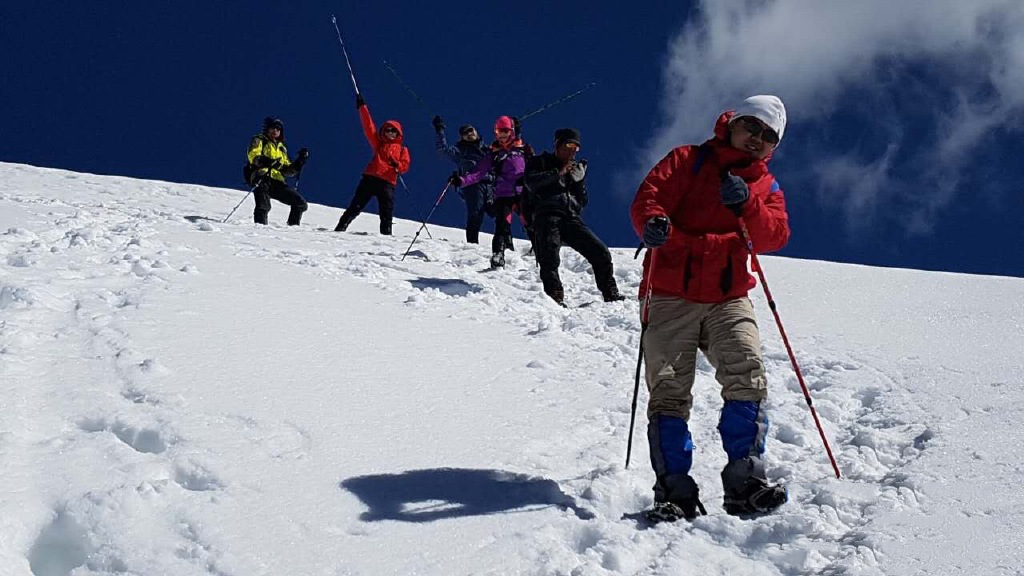

Important trekking/climbing policy
Due to its high altitude and complicated natural environment of Mount Siguniang Scenic Area, if you are engaged in outdoor activities including trekking, mountain/rock/ice climbing, to ensure the safety, travelers are required to hire a licensed mountain guide and register at the Outdoor Activities Management Center of Mount Siguniang. At the same time, you need to purchase real-name outdoor tickets at the outdoor center, which costs CN¥ 150 per person and is valid for 3 days, an extra cost CN¥ 30 per person per additional day will be charged if the trekking days exceed.
The official price for hiring a licensed local guide is CN¥ 200 per day per guide. The horse to deal with the heavy work is CN¥ 200 per horse per day. The riding horses can be rented at the Haizi Valley and Changping Valley, the single-way cost is usually CN¥ 240 per person From the entrance of Haizi Valley to Huahaizi, and CN¥ 320 per person from Lamasi to Muluozi.

Accommodation and Dining at Mount Siguniang
Accommodation:
With the development of the local economy and tourism in Mount Siguniang, many new lodges from local guesthouses to local 4-star hotels have been opened at Siguniangshan Town, which greatly improves the accommodation condition here and offers more options for tourists to choose. In addition, it is a unique experience to stay overnight at one of the local family inns in Changping Valley or camp at one of the campsites in Changping Valley and Haizi Valley. However, one thing you should bear in mind is that, as such a remote and underdeveloped area, the amenities and service of the hotels in Mount Siguniang are not as good as those in the bigger cities of China, not to mention international standard hotels.
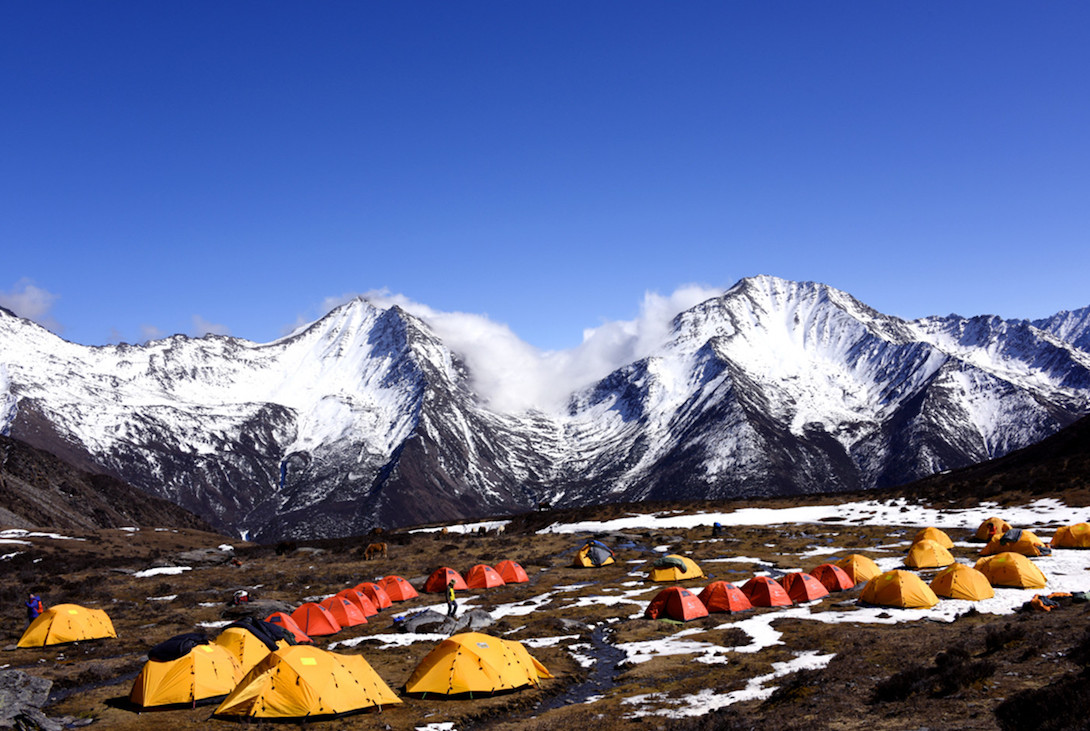
Food
Local restaurants, mostly served with local Sichuan dishes, can be found at the both sides of the single street of Siguniangshan Town, and some of them are noodle restaurants serving noodles and dumplings. Besides, it is possible to find some restaurants serving local Tibetan dishes and drinks like the tasty whole mutton or whole chicken barbecues. While traveling or trekking in the valleys and mountains, it is highly recommended to bring some favorite take-away food or snacks, even though there are several convenience stores selling simple snacks or drinks with higher cost and some local Tibetan families offering simple local meals such as fried rice, noodles, etc.
Drinks
Usually, the tap water is undrinkable, it is highly recommended to drink boiled water, if you have a weak stomach, it’s better to drink bottled mineral water as the water boils at a lower temperature in the high elevations. The bottled mineral water, Chinese green tea and instant coffee can be bought in Siguniangshan Town. The local Tibetans are used to drinking yak butter tea or sweet tea to fight against the extreme weather there, they are available at the local guesthouses and local Tibetan’s home. Besides, while trekking, do not attempt to drink water directly from natural streams/rivers/ice as it can let you suffer from diarrhea.

What to bring for a trekking at Mount Siguniang
Cloths:
- Jackets (required for outdoor activities, they need to be wind-proof, waterproof, breathable and wear-resistant).
- Fleece jackets or sweaters (with WINDSTOPPER, mainly wind-proof and to keep you warm).
- Perspiration-wicking underwear (keep your body dry after outdoor sports).
- Quick-drying underwear (necessary for summer travel, pants and sleeves are best detachable).
- Down underwear (necessary to keep warm when traveling in winter or going to the plateau).
- Other personal clothing (disposable underwear, singlet T-shirt...).
- Hiking boots (waterproof and breathable, having thick soles and high enough to provide adequate ankle support).
- River upstream shoes or sports sandals (can be used as camp shoes and be worn directly on foot).
- Sweat-wicking socks (preferably made of COOLMAX material, worn with GORE-TEX shoes, can drain foot sweat, prevent frostbite, and prevent blisters).
- Sun hat (round-edged, baseball cap-style, whatever you like, just the one can block the sun).
- Fleece hat (mainly to keep warm).
- Thin gloves (mainly for convenience of activities and sun protection).
- Thick gloves (mainly for keeping warm).
- Sun glasses (sports type is better, the main function is sunshade, and UV protection).
- Headscarf (to wipe sweat, but also as a scarf to keep out the cold).
Auxiliary equipment:
- Thermal bottle (necessary for traveling on the plateau, drinking hot water is a kind of enjoyment).
- Headlamps (light up at camp or at night, with sufficient batteries).
- Trekking poles (used well, it can save about 20% of the physical strength and reduce the impact on the knee).
- Knee pads (mainly to protect your knees either for those injured or not injured).
- Snow cover (very useful in snowy or muddy roads).
- Large backpacks or pack bags (for horse or yak consignment).
- Assault bag (small bag, carrying road meals and other personal items).
- Backpack rain cover or rain bag (used to prevent rain and dirt).
- Waterproof bag (for sleeping bags and other clothing waterproof, instead, you may use large plastic straps).
- Raincoat for rainy days.

Camping equipment:
- Sleeping bag (the limit temperature of the sleeping bag is at least -15 degrees below).
- Moisture-proof cushion (foam cushion or inflatable cushion).
- Aluminum film mat (optional).
- Stoves and pot (used to boil water and make tea, optional).
Other equipment:
- Utensils: (have your own pair of chopsticks, fork and bowl for camp meals).
- Personal medication (Some personal medicine for the regular cold and diarrhea, high altitude medicine).
- Gaiters: Good for winter treks or wet trails conditions during rainy summer months.
- Picnics (recommendations: chocolate, beef jerky, raisins, energy bars, mustard, fruits, bread and other high-calorie foods).
- Personal hygiene: toothpaste, toothbrush, towel, foot powder, moisturizer, sunscreen (more than SPF50, important, necessary), lipstick (important, necessary), hand cream, fever stick, nail clippers, garbage bag.
- Insulated booties (Down or fiber-filled, for the colder months).
- Waterproof groundsheet or poncho (Handy for laying out gear on wet ground).
- Your passport with a valid China visa.
- Camera with large capacity memory card.
- Power Bank.

Useful travel tips
- Trekking in Mount Siguniang scenic area, you should be well prepared and consult your doctor for advice, if necessary have a physical examination to check your physical fitness.
- It’s important to start the physical fitness program several months in advance. Walking or trekking over rugged areas regularly is the best way to prepare for this trek. Travelers could also do some regular sessions of periodic aerobic exercises.
- Drink plenty of hot water. Especially after camping, everyone should drink 1 to 2 liters of hot water as soon as possible. Cold water is forbidden on high mountains.
- While trekking and climbing in high altitude areas, avoid impetuousness and excessive force, hike up slowly, take a short break and adjust the breathing every time you rise a certain distance, and keep breathing smoothly and efficiently.
- When climbing up to the summit of the mountain peaks, avoid rushing up, keep moving up slowly and carry some hot water and sugar with you.
- Travelers should keep fit and healthy.
- Travelers should eat enough digestible food at the campsite.
- Travelers should make sure to have enough sleep.
- Travelers should keep warm and avoid the cold.
- It is recommended to carry a portable camera when climbing.
Appealed by the stunning views of Mount Siguniang, and can’t wait to plan your trekking tour to Mount Siguniang, please feel free to share your comments with us, as a local China travel agency based in Chengdu with over 14 years of experience, we at WindhorseTour are confident to design a unique and safe trekking tour for every traveler.


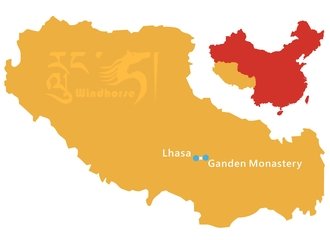
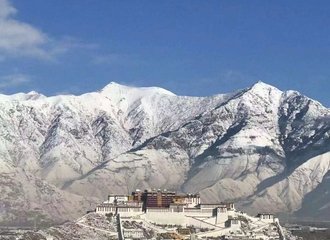
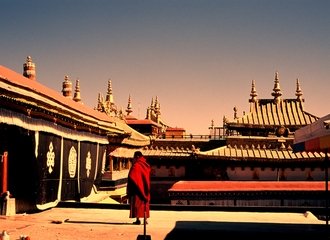
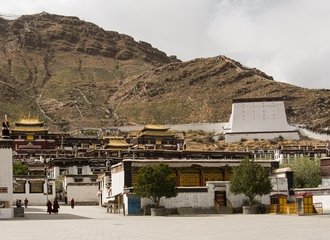
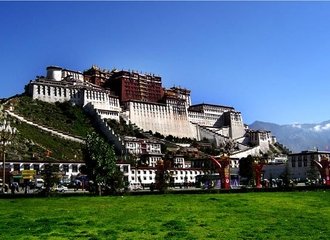
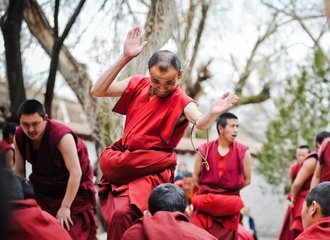
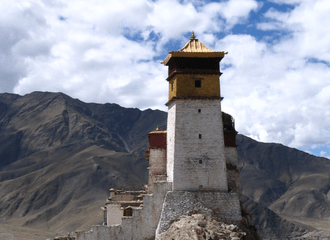
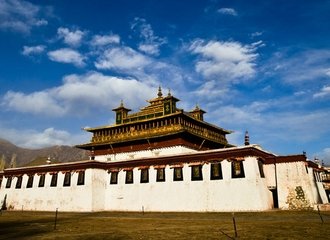
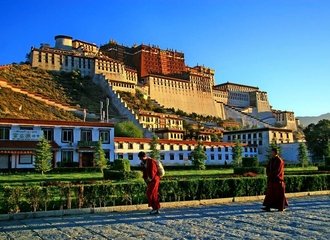
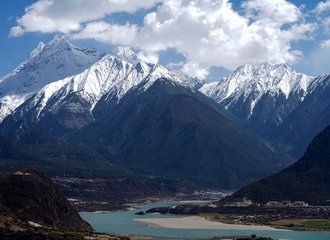
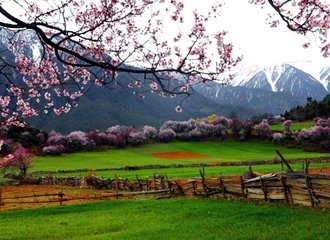
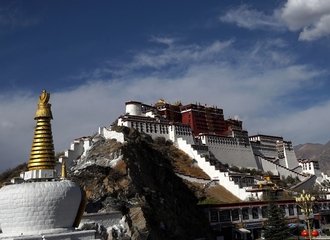
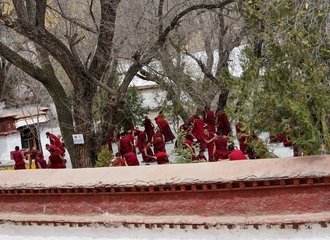
Comments
Hi, is it still possible to do the Bipeng Trek? I heard it may be closed for some reason? We are looking to go this week.
In reply to Hi, is it still possible to… by Nicole (not verified)
Hi Nicole,
Thanks for your interest. This is Anita from WindhorseTour.
Regrettably, I would like to share the trek is not possible currently, as Garze and Aba area are not open to foreigners. We will keep you informed when circumstances allow.
Best regards,
Anita